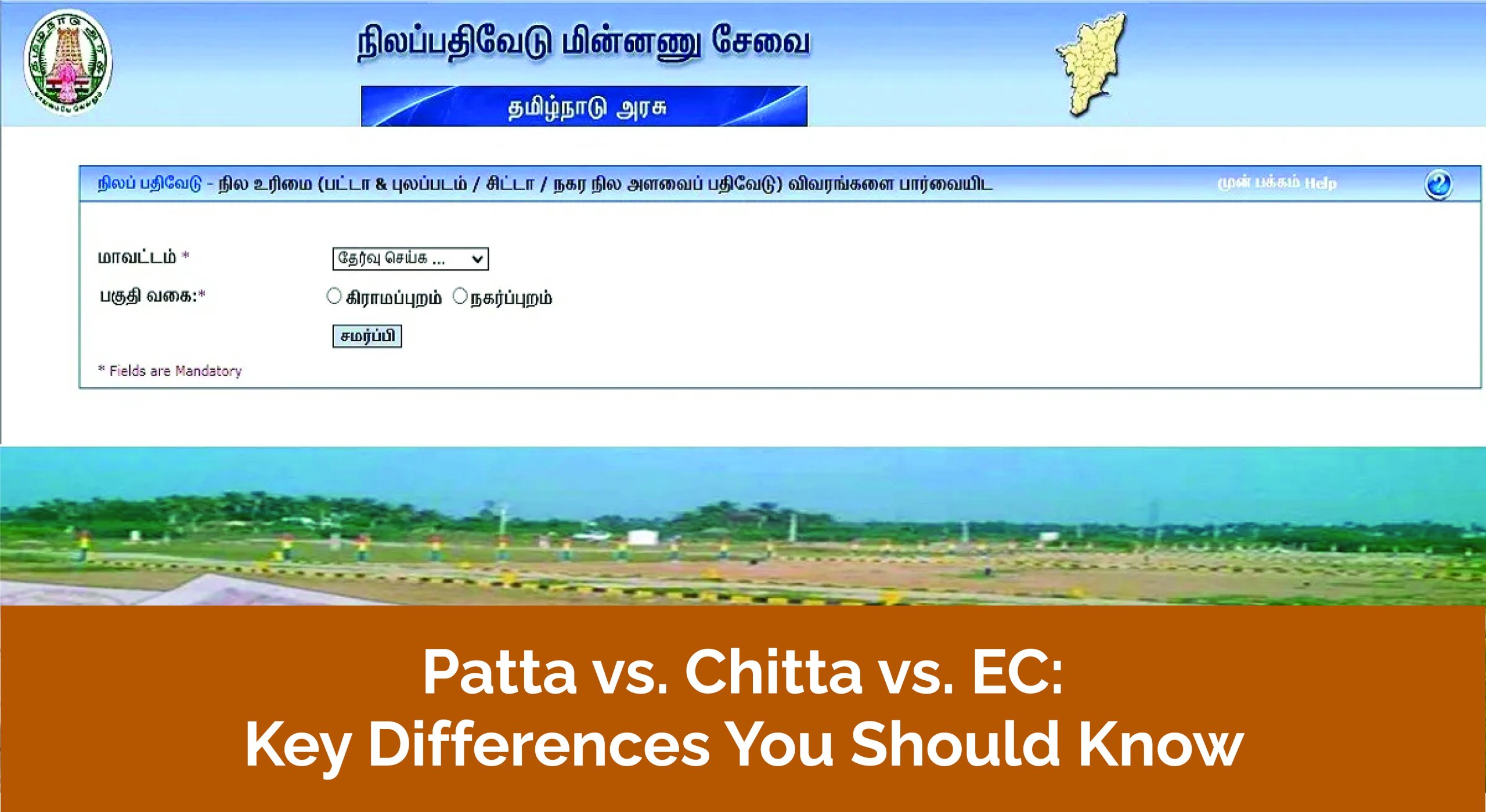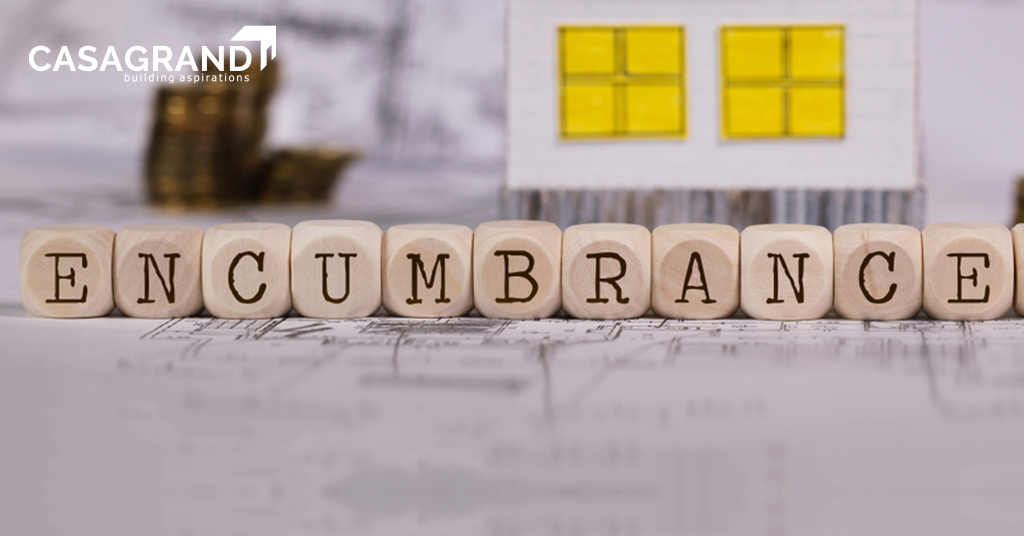When buying property in Tamil Nadu, especially if you are planning to buy a villa in Chennai, understanding legal documents is crucial to ensure a hassle-free purchase. Among the most important are Patta, Chitta, and Encumbrance Certificate (EC)—essential documents that confirm land ownership, classify land type, and verify the legal standing of a property.
These documents play a key role in ensuring transparency and legality in real estate transactions. But what exactly do these terms mean, how do they differ, and why are they so important for homebuyers? Let’s explore their significance in detail to help you make a confident and well-informed investment.
What is Patta?
A Patta is a document issued by the Tamil Nadu government that proves the ownership of a specific piece of land. It contains details such as the owner’s name, survey number, type of land (wetland or dry land), and the area of the land. The document is issued by the revenue department and is crucial when transferring ownership of a property.
Why is Patta Important?
- Establishes legal ownership of the land.
- Helps in avoiding disputes and encroachments.
- Required for property transactions and land conversions.
- Essential when applying for bank loans or approvals.
What is Chitta?
A Chitta is another revenue document that was historically used in Tamil Nadu to classify land based on ownership and usage. It mainly recorded whether the land was ‘nanjai’ (wetland) or ‘punjai’ (dry land). However, in 2015, the Tamil Nadu government merged Patta and Chitta into a single document known as the Patta Chitta.
Why was Chitta Merged with Patta?
- To streamline land records and reduce paperwork.
- To ensure all details are available in a single document.
- To improve transparency in property transactions.
What is an Encumbrance Certificate (EC)?
An EC is a document that provides details of any legal or financial liabilities on a property. If you are planning to buy a villa in Chennai, like Casagrand Holachennai, checking the EC is essential to ensure that the property is free from any mortgages, loans, or disputes.
Why is an EC Important?
- Confirms that the property is free from legal and financial burdens.
- Required when applying for home loans and property registration.
- Helps in property verification before purchase.
Difference Between Patta, Chitta, and EC
Patta, Chitta, and EC are key land records in India, each serving a distinct purpose in property ownership and transfer. Let’s explore their differences and roles in land-related matters.
- Patta
A Patta is a legal document that proves land ownership. It includes details such as the owner’s name, survey number, land classification (wetland or dry land), and land extent. Issued by the Revenue Department, it is essential for property transactions and land conversion.
- Chitta
Previously issued by the Revenue Department, a Chitta classified land into ‘nanjai’ (wetland) or ‘punjai’ (dry land). However, since 2015, Chitta has been merged with Patta to provide a unified land record, eliminating the need for a separate Chitta document.
- Encumbrance Certificate (EC)
The Encumbrance Certificate, issued by the Sub-Registrar Office, records all registered transactions related to a property. It helps homebuyers verify that the property is free from legal or financial liabilities such as mortgages or pending loans.
How to Obtain Patta, Chitta, and EC?
Obtaining Patta, Chitta, and EC is a straightforward process, but knowing the steps can save time and effort. Here’s how you can get these important land documents.
Steps to Get a Patta
- Visit the Tamil Nadu government’s official e-services portal.
- Select ‘Patta Chitta’ and enter details such as district, taluk, village, and survey number.
- Submit the application and pay the required fee.
- Download the document once approved.
Steps to Get an EC
- Visit the Tamil Nadu Registration Department website.
- Select ‘Encumbrance Certificate’ and enter the necessary details.
- Choose the timeframe for which you need the EC.
- Pay the fee and download the document.
Why These Documents Matter When Buying a Villa in Chennai?
If you’re looking for premium villa plots in Chennai, like Casagrand Selenia, ensuring the property has a clear Patta, Chitta, and EC is crucial. These documents help in avoiding disputes, securing loans, and ensuring that the property is legally compliant.
What to Check Before Buying a Villa in Chennai?
- Ensure the Patta Chitta is updated and matches the property details.
- Verify the EC to confirm no outstanding liabilities.
- Check land classification (previously recorded in Chitta) to understand land use restrictions.
- Confirm that the builder or property developer has obtained all necessary approvals.
Before You Buy: Verify Patta, Chitta, and EC for Peace of Mind
Understanding the difference between Patta, Chitta, and EC is essential when purchasing property in Tamil Nadu. While Patta confirms ownership, Chitta was historically used for classification, and EC ensures the property is free from legal disputes. If you are looking to buy a villa in Chennai, always verify these documents to make a secure and informed investment.
Meanwhile, an Encumbrance Certificate verifies that a property is free from financial or legal disputes. Before making an investment, it’s vital to check these documents to ensure a hassle-free and legally secure purchase.


















